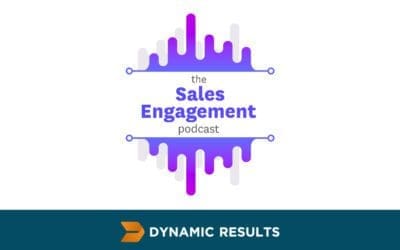ROME, ITALY – NOVEMBER 29, 2020: Actor Tom Cruise meets fans during a break from filming the movie Mission Impossible 7 – Libra, in Piazza Venezia -PHOTOGRAPH BY Ravagli/Barcroft Media via Getty ImagesThe Role of Anger in Leadership: A Case Study of Tom Cruise ...
Insights for Better Leadership
Sales Tips: Embracing Emotional Safety® in Uncertain Times
Emotional Safety®: The Key to Sales Success in Uncertain Times In today’s rapidly changing world, marked by crises and uncertainty, the traditional sales playbook is no longer enough. The concept of Emotional Safety® emerges as a critical, yet often overlooked,...
Unlocking Leadership Skills: Navigating Through Crucial Moments
Leadership Skills Beyond Titles: A Guide to Essential Actions It has often been remarked – including by this writer and in this space – that leaders are not just those people who find themselves in leadership positions. Just as captains of sports teams are not the...
Beyond the Title: Leadership Training Techniques for Managers
Leadership Training for Managers: How to Lead Without a Title Henry Evans is the co-author of “Step Up: Lead in Six Moments that Matter,” which explores ways that you can demonstrate leadership regardless of your job title. Evans spoke about his leadership theories...
Friend or Foe? Decoding the Role of Workplace Pessimism
Harnessing the Power of Pessimism in Leadership and Team Success Most of us know that pessimists can be a challenge to deal with in the workplace. As a leader, you need to manage pessimists by coaching them to see other options and helping them to reflect on...
Boss Rage to Boss Power: Manage Anger, Lead Better
The Surprising Upsides of Managing Anger at Work If you want to get angry at work, it’s better to be a man. Sexist though this sounds, it’s a finding from a recently published study conducted by psychologists at Arizona State University. Women, it seems, may have been...
Meet the CEO Coaches
Businessworld / India Citius, Altius, Fortius — that’s what India’s business chiefs need, and that’s what CEO trainers give The Gurus But who are these people who make the CEOs what they are or what they want to be — confident, assured, poised? Meet the CEO coaches....
Become a Top Leader: 5 Must-Have Leadership Qualities
Great Leadership Qualities for Transforming Workplace Dilemmas Everyone faces dilemmas at work. Adept execs turn quandaries into accomplishments. How they proceed: The Art of Lengthening the Fuse in Leadership Lengthen the fuse. We all work with difficult...
Emotion and the Art of Negotiation: The Role of Anger
Brief Summary of the BBC Podcast In a world where negotiations can shape the future of nations and businesses alike, the role of emotion, particularly anger, has often been a topic of debate. This discussion has become even more relevant following a series of intense...
Honing to Perfection
His company works with businesses and other organizations to help their top executives improve their performance. “We don’t like the word ‘coaching’ because it’s an extremely uncredentialed industry,” Evans said. “A large percentage of people calling themselves...
Henry Evans Shares Corporate Experience with SMU Cox Students
For immediate release Henry Evans Shares Corporate Experience with SMU Cox Students Dallas, TX/USA – March 11, 2014Henry Evans, Co-founder and Managing Partner of Dynamic Results, LLC, presented a seminar titled Accountability Principles for Dynamic Results on Monday,...
Henry Evans and Colm Foster on Experiential Learning
According to Henry Evans and Colm Foster, “Learning a skill is very different from studying for a test or learning how to program a spreadsheet; it is experiential. That kind of learning primarily involves practice; to change your behavior, you must actively engage in...












